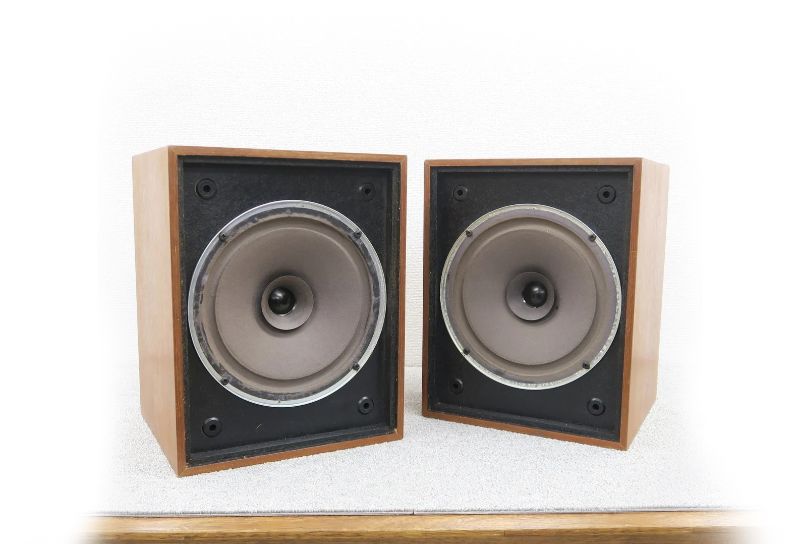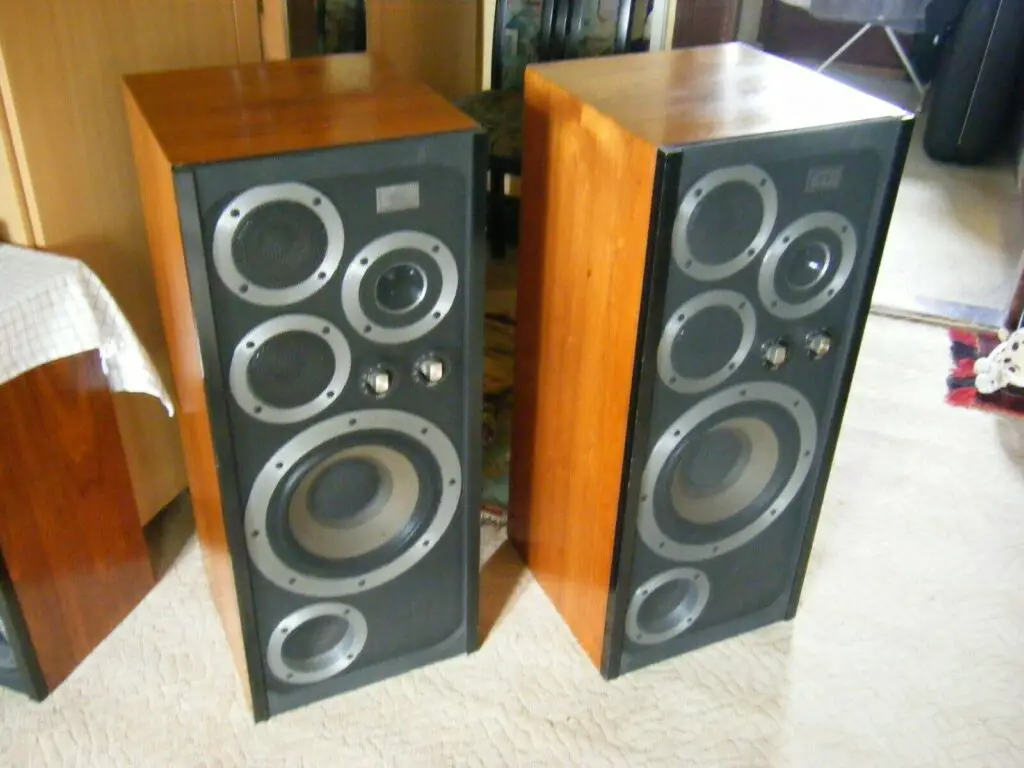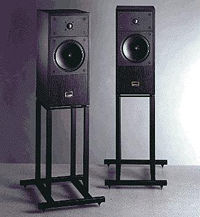We periodically see exciting new variations on the loudspeaker theme; manufacturers sometimes come up with better cone materials for their mid/bass units, and occasionally unique tweeters appear. Ribbons have recently regained popularity, although other types have also come and gone. One of the most intriguing to yours truly was the Linaeum ‘figure of eight’ dipole design, which was first introduced to the British hi-fi market in 1995 with the quite odd-looking Realistic Optimus Pro LX5. If you blink, you’ll miss it – but there are still quite a few about. It’s one of the most fascinating loudspeakers of its day, made all the more remarkable by the fact that it was a low-cost design.
In traditional dome tweeters, the electrical signal transporting the audio goes through a coil of wire suspended between the circular poles of a ring-shaped magnet. As the current alternates, the dome or cone travels forward or backward, causing the air to move and produce sound. The voice coil of the Linaeum tweeter is vertically flattened and suspended between opposing rectangular permanent magnets on either side, which push or pull two semi-cylindrical sheets of mylar film fastened at the other end. These create sound by rotating back and forth in the air. They effectively act as a dipole, radiating both front and back, resulting in a totally different listening experience than a traditional dome tweeter — as soon as you put your ears on them!
That’s impressive, but the story doesn’t end there. Tandy Corporation produced the Realistic Optimus Pro LX5 speaker (Realistic was the speaker brand of that company, which sold in the US via Radio Shack stores, and in the UK exclusively via Tandy). Linaeum, an Oregon-based high-end speaker manufacturer, supplied the tweeter subassemblies, which were shipped to Malaysia and placed into the speaker box before being coupled to a relatively generic mid/bass driver. It was released with the less costly Optimus Pro X77 and LX4, which used a less desirable front baffle-mounted tweeter, but the LX5 featured a top-mounted bi-directional tweeter on a baseplate. To add to the confusion, the Realistic Optimus Pro LX5 was also offered as the Genexxa Pro LX5, which was virtually similar. Linaeum also produced its own line of loudspeakers, employing its patented tweeter, which is believed to have a thinner, more sensitive, better sounding, but arguably less durable diaphragm in this guise.
The LX5 is a tiny loudspeaker with dimensions of 267x162x165mm (HxWxD) and a weight of 3.4kg per. On top, a wire mesh grille protects the 50x110m Linaeum dipole driver; beneath it, a molded plastic top plate is affixed to a rather unglamorous, matte grey finished metal box that houses the crossover and the 130mm mid/bass driver. This speaker has a polypropylene cone, which was out of style even in the 1990s, while later versions of the speaker used Kevlar. The crossover frequency is 4.5kHz, and the speaker’s claimed frequency response is 85Hz to 20kHz. The nominal impedance is 8 ohms, and the power handling is 100W RMS, according to the manufacturer.
The LX5 is not just a little speaker, but it also has a smaller interior cabinet volume than a normally constructed loudspeaker of the same size. This, along with the fact that the mid/bass unit has a narrower cone than its overall diameter, doesn’t assist with sensitivity. Two front-firing reflex ports try to speed things up, but they’re tiny and can’t move much air. The crossover, with a single iron-cored series inductor rolling off the woofer at 6dB per octave and a 6.2F plastic-film series capacitor preventing the tweeter from having to reproduce bottom notes, is the only thing that makes a difference. Even yet, the LX5’s sensitivity remains at an unacceptably low 83dB/1w/1m. To be fair, any extremely compact box will struggle to perform much better, but the LX5 remains at the very bottom of the acceptable range. Most recent solid-state power amplifiers now put out at least 50W RMS, which should be enough to drive the LX5 to acceptable levels – but don’t expect to pair this little loudspeaker with your 3W single-ended tube amp or power a party fit for Studio 54!
This is a tale with varying degrees of bliss and sadness. These days, it’s rare to hear such a captivating speaker — one who is highly proficient in the treble yet seriously lacking in the bass. As a result, the LX5 will either succeed or fail based on the music you listen to, as well as the volume and room in which you listen to it. It’s reasonable to say that this isn’t your typical boring, generic-sounding modern loudspeaker; it’s almost as if it’s the final gasp of the crazy-sounding items from the 1970s. It embarrasses speakers that are far more expensive in some ways, such as the impression of air and space in the treble and its overall sweetness. In others, you’re left scratching your head, wondering how it was ever signed off and approved for sale. The LX5 performs well when mounted on a firm stand at least 30cm away from a rear wall, but anyplace else results in a noticeable upper bass boom, as well as some major chuffing from the bass ports on occasion!
When you play Scritti Politti’s The Word Girl, you’ll be welcomed by an uncannily vast sound that, despite the LX5’s small size, fills the room with light, breezy sound. The top registers are excellent, sounding free and unrestricted in a way that puts some £5,000 standmounters to shame. Green Gartside’s voice is silky and ethereal, while the glittering harmonics from the Roland D50 keyboard shine all around. They’re surprisingly open and unfettered for such small speakers, and they make a terrific boom. The problem is that the bass is weaker than it should be, but it booms over a small range in the lower midband, giving the proceedings a boxy sound. This is strange because the treble’s last note is boxy. It signifies that your ears will need to adjust for a few minutes. However, once you’ve done so, things appear to be a little easier to follow.
The key is to get the LX5 in the right spot and avoid causing its bass to go crazy. This means you can’t turn up the volume too loudly when listening to music with strong basslines, lest it compresses the basslines and/or causes the cabinet to vibrate excessively or overwork the ports. Gentle, mostly acoustic soul songs, like Randy Crawford’s Rainy Night in Georgia, are excellent – but Goldie’s intense drum and bass track Terminator is not! Get to know the LX5, don’t overdrive it, and feed it delicate, soft music – even classical – and you’ll be OK. My favorite rendition of Beethoven’s Pastoral Symphony is a great joy to listen to, with an effortlessly spacious and expansive sound, well-placed images within the recorded acoustic, and outstanding depth perspective. The mid/bass unit’s limited feel and modest inclination to give a ‘one-note’ bass are only discernible on crescendos with massed strings. Given half a chance, the Linaeum tweeter is capable of a lovely sound when in the zone.
Anyone who has lived with a Realistic Optimus Pro LX5 knows that the device’s low frequency performance is an issue; its inclination to boom in the upper bass isn’t appealing, but there are ways to improve it. To add resistive damping, some individuals advocate stuffing the bass ports with drinking straws(! ), while others recommend cutting foam bungs and inserting them with greater success. Removing the mesh grilles from the tweeters improves the treble by making the sound significantly brighter and sharper. Others have replaced the crossover capacitor with a high-end audiophile-grade one and increased the aluminium cabinet’s dampening.
The Realistic Optimus Pro LX5 is not for headbangers, but it is an exceedingly interesting and fun little ‘curio’ from the 1990s that fell between the gaps and has been virtually forgotten. Nonetheless, good examples do occasionally appear in classified ads and online auction sites, and they are well worth trying out – especially in a second or even third system with limited room. The one that got away is certainly worth reclaiming, and costs range from £50 for a well-worn pair to £150 for minters, so there’s no reason not to!







